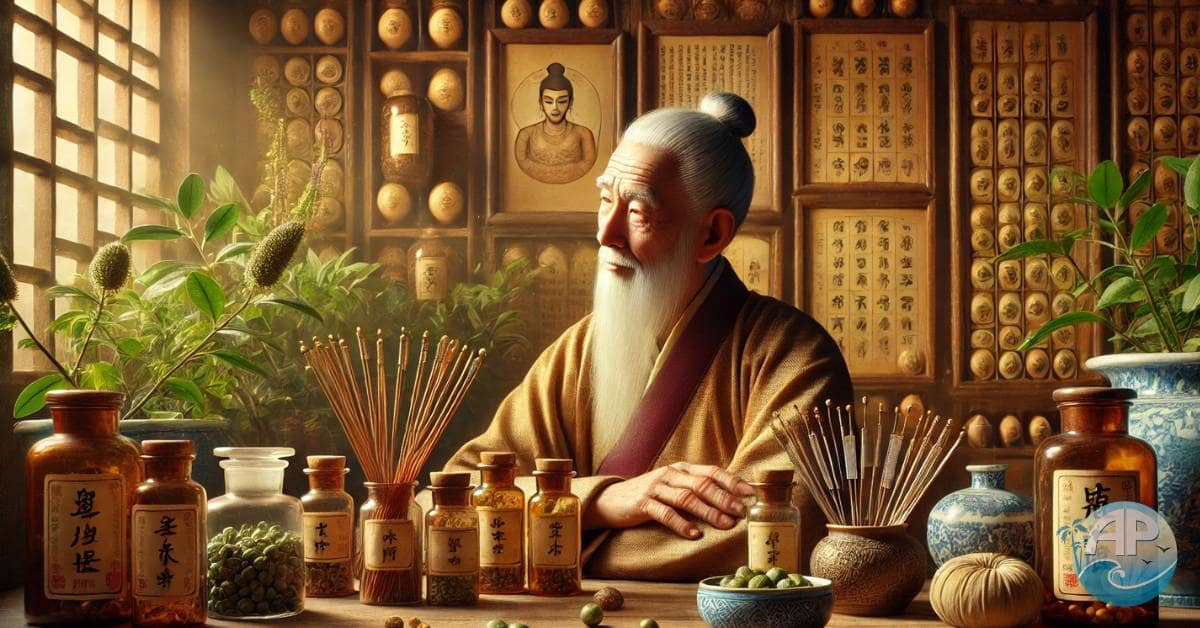Uncover the Timeless Benefits of Ayurvedic and Traditional Chinese Medicine for Lasting Wellness
Table of Contents
- The Resurgence of Ancient Wisdom
- Origins of Ayurvedic Medicine
- Core Principles of Ayurveda
- Traditional Chinese Medicine Overview
- Comparing Ayurveda and TCM
- Modern Benefits of Ancient Practices
- Embracing Eastern Healing Today
- Final Thoughts on Balance & Wellness
The Resurgence of Ayurvedic and Traditional Chinese Medicine
In a world that often seeks quick fixes and instant results, many are now turning back to the roots of Ayurvedic and Traditional Chinese Medicine for more holistic, long-lasting health solutions.
These ancient systems of healing are more than just remedies—they’re a way of life, focusing on restoring balance and harmony within the body, mind, and spirit.
“Your body is your temple. Keep it pure and clean for the soul to reside in.” – B.K.S. Iyengar.
The Origins of Ayurvedic and Traditional Chinese Medicine
Understanding the Ancient Roots
Both Ayurvedic and Traditional Chinese Medicine have a long history rooted in holistic healing principles that date back thousands of years.
Ayurveda, the “science of life,” dates back over 5,000 years to the ancient Indian subcontinent. Rooted in Vedic culture, it was developed by ancient sages who were inspired by the natural world around them.
This profound system was first recorded in sacred texts like the Charaka Samhita and Sushruta Samhita, which laid the foundation for understanding the body’s unique constitution.
Ayurveda believes that health is a delicate balance between the body, mind, and spirit, emphasizing prevention over cure.
Core Principles of Ayurveda: The Science of Life
Understanding the Doshas in Ayurvedic Medicine
The essence of Ayurvedic Medicine lies in understanding your dosha or body type
- Vata (Air + Ether): Governs movement, breathing, and the nervous system. Think of it as the wind within your body.
- Pitta (Fire + Water): Responsible for digestion, metabolism, and transformation. It’s the fire that fuels your internal processes.
- Kapha (Earth + Water): Provides structure, stability, and immunity. It’s the grounding force that keeps you stable.
Balancing these doshas is key to maintaining optimal health. When one dosha is out of balance, it can lead to illness. Ayurveda tailors its treatments to bring harmony back to these energies.
Ayurvedic Healing Techniques
To restore balance, Ayurveda offers a range of natural therapies:
- Herbal Remedies: Ashwagandha, turmeric, and holy basil are popular choices.
- Panchakarma: A detoxification process to remove toxins from the body.
- Yoga and Meditation: Integrating the mind, body, and spirit for inner peace.
- Dietary Adjustments: Tailoring your diet to your dosha type.
- Abhyanga (Oil Massage): A rejuvenating practice that promotes circulation and reduces stress.
“He who has health has hope, and he who has hope has everything.” – Thomas Carlyle.
Traditional Chinese Medicine: A Holistic Approach
The Role of Yin, Yang, and Qi in Traditional Chinese Medicine
In Traditional Chinese Medicine, the balance of Yin, Yang, and Qi is essential for health.
- Yin and Yang: These opposing forces must be in balance for health. Yin represents calmness, darkness, and cooling energies, while Yang symbolizes activity, brightness, and warmth.
- Qi (Chi): The life force that flows through the body. When Qi is blocked, illness occurs. TCM aims to restore the smooth flow of Qi.
Key TCM Healing Methods
TCM offers a range of practices to restore balance and promote health:
- Acupuncture: Stimulating specific points on the body to release blocked Qi.
- Herbal Medicine: Remedies like ginseng, licorice root, and goji berries.
- Tai Chi and Qigong: Slow, mindful movements to cultivate Qi and reduce stress.
- Cupping Therapy: Using suction cups to promote blood flow and detoxification.
- Moxibustion: Burning dried herbs near the skin to warm the body and stimulate healing.
Comparing Ayurveda and TCM
| Aspect | Ayurveda | Traditional Chinese Medicine |
|---|---|---|
| Philosophy | Balancing the three doshas | Harmonizing Yin, Yang, and Qi |
| Focus | Mind-body-spirit balance | Energy flow & meridian pathways |
| Key Practices | Herbal remedies, yoga, detox | Acupuncture, Tai Chi, herbal medicine |
| Dietary Approach | Dosha-specific diets | Warming vs. cooling foods |
| Historical Origin | Ancient India (~5,000 years ago) | Ancient China (~2,500 years ago) |
Modern Benefits of Ayurvedic and Traditional Chinese Medicine
The holistic approaches of Ayurvedic and Traditional Chinese Medicine are gaining popularity for their ability to treat the root causes of illnesses.
Benefits of Ayurvedic Medicine:
- Boosts immunity with herbs like turmeric and ashwagandha.
- Reduces stress through yoga and meditation.
- Improves digestion with dietary adjustments tailored to your dosha.
Benefits of Traditional Chinese Medicine:
- Alleviates chronic pain through acupuncture.
- Enhances mental clarity with Tai Chi and Qigong.
- Balances hormones with herbal formulas.
These practices offer a holistic approach, treating not just the symptoms but the root causes of illnesses. By focusing on prevention, they empower individuals to take control of their health.
Embracing Eastern Healing in Today’s World
Integrating Ayurvedic and Traditional Chinese Medicine into your life can transform your approach to wellness. Whether it’s adopting simple dietary changes or trying acupuncture, these ancient traditions provide tools to help you live a balanced and fulfilling life.
Here are a few practical ways to get started:
- Try Yoga or Tai Chi: A few minutes each day can reduce stress and improve flexibility.
- Herbal Teas: Start with turmeric or ginger tea for digestive health.
- Mindful Eating: Consider your dosha or Yin-Yang balance when planning meals.
- Acupuncture: If you suffer from chronic pain or stress, this could be a game-changer.
Final Thoughts: Finding Balance and Wellness
The ancient wisdom of Ayurvedic and Traditional Chinese Medicine is timeless. As we face the challenges of modern life, returning to these holistic practices can provide balance, clarity, and a deeper connection to our well-being.
Embrace these traditions not as quick fixes, but as lifelong commitments to a healthier, more harmonious existence.
“The natural healing force within each of us is the greatest force in getting well.” – Hippocrates.
Explore More About Natural Remedies and Healing
If you’re interested in diving deeper into natural healing methods and holistic health, check out these thought-provoking articles on AndrewPlimmer.com:
- The Power of Herbs: Natural Remedies for Everyday Ailments
- Detox Your Body Naturally: Ayurvedic and TCM Techniques
- Turmeric Benefits: The Golden Spice for Health and Wellness
- How to Balance Your Doshas for Better Health
- Mindful Living: Integrating Eastern Wisdom into Your Life
- Natural Stress Relief: Discover the Healing Power of Meditation
- Longevity and Quality of Life: Finding the Right Balance
- Health is the Real Wealth: Unlocking the True Power of Wellness
Thinking About a Holistic Health Business?
If you’re passionate about natural wellness, it might be time to explore the world of holistic health on a deeper level. Imagine turning that passion into a business that supports others on their wellness journey.
The 7 Day Shift is your perfect guide to transform your passion into profit. It’s more than just a business – it’s a way to build a life filled with purpose, healing, and health.
Embrace the possibilities today and start creating the life you’ve always envisioned!




